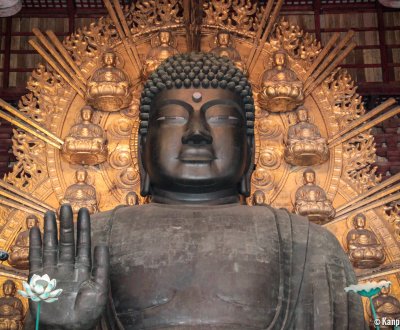The Main Japanese Buddhist Deities
Buddha, Bosatsu, Myo-o and Shitenno
Buddhism originates from India and traveled through China and Korea before reaching Japan in the 6th century. Several Japanese branches have subsequently developed, built temples and chosen a principal Buddhist deity from a vast array of enlightened Buddhas, Bodhisattva and other guardian entities, that have been part of the Japanese’s daily life ever since.
It took more than 1,000 years to Buddhism to cross Asia, from India where it originates, to Japan where it arrived after detours in China and Korea. The first Japanese Buddhist monks visited these countries to study the religion and came back to initiate major branches that are still existing nowadays, especially:
- The Tendai school, founded by Saicho (767 - 822) ;
- Shingon, an esoteric school founded by Kukai (774 - 835) ;
- The Pure Land School, also called Jodo sect and founded by Honen (1133 - 1212) ;
- The True Pure land School, named Jodo-Shinshu in Japanese and founded by Shinran (1173 - 1263) ; and,
- Zen Buddhism encompassing several branches, including the Rinzai and Soto currents.
These schools blended with the customs 🛂 and beliefs already established among the Japanese people who were practicing the Shinto cult since prehistoric times. Buddhism and Shinto would therefore cohabit and influence each other to the point of being associated within syncretic spiritual sites. The same occurred to the deities some of which belong to both religions’ pantheons.
A complex, hierarchical pantheon
The mapping of Japanese Buddhism deities is rather complex and extended, as it was adapted to each school or sect in Japan and originates from various countries and philosophical trends in Asia. There are a few characteristic features to remember to navigate in this religious system.
First, Buddhism has no "god" sensu stricto, but rather beings, and more precisely souls, spirits (mental continuums) tending towards the ultimate state, the Enlightenment or Bohdi in Sanskrit (one of the liturgical languages of Buddhist texts) so as to access to the nirvana.
To put it simply, there are 3 main ways to achieve Enlightenment:
- The "Small Vehicle" that considers that one can only reach it by oneself,
- The "Great Vehicule" into which it is possible to be helped; and,
- The "Diamond Vehicle" related to Tantric or esoteric Buddhism.
In Japan, the last 2 concepts are predominant and therefore shaped the archipelago’s pantheon of deities. These deities follow a hierarchical chart defining where they are on the path to the Enlightenment. Below is a non-exhaustive selection of the main Buddhas, Bodhisattva and other entities which are the most worshiped in the country of the Rising Sun.
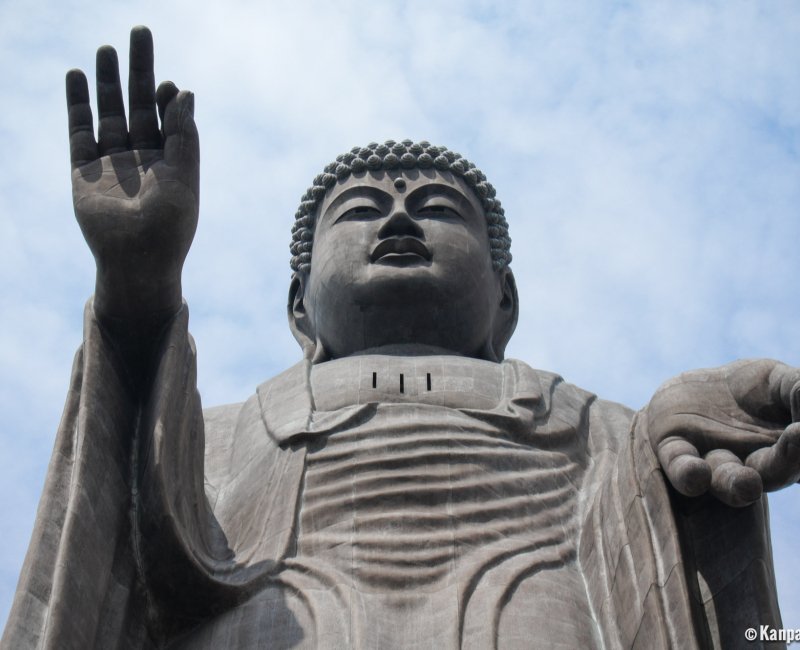
Buddhas
"Buddha" is the highest rank in the hierarchy and a title given to beings who reached Enlightenment. Among them are:
- The "Buddha", Siddhârta Gautama, the first to achieve Enlightement and founder of Buddhism. He is also called 仏様 Hotoke-sama in Japanese; and,
- "Buddhas" who are the souls who reached the illumination after Buddha.
In Japan, they can be recognized by the suffix 如来 nyorai attached to their names and that could be translated as "enlightened".
Shaka Nyorai (釈迦如来)
Shaka is the original Buddha, Sakyamuni in Sanskrit, that is to say Siddhârta Gautama. He is revered by most of the schools in Japan, except the Shingon and the True Pure Land sect.
His most widespread representation pictures him the right hand raised at bust level, the palm facing viewers, and the left hand on his thigh, the palm facing up. It is the main mudra (a codified and symbolic position of the hands) in Buddhism.
The anniversary of Shaka the Historical Buddha is celebrated each year in Japan during Hana Matsuri on April 8.
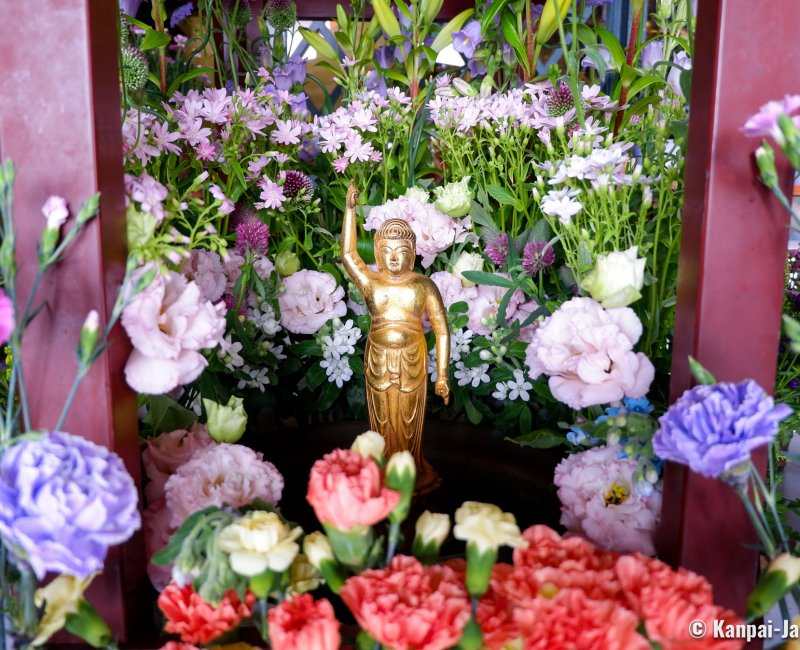
Dainichi Nyorai (大日如来)
Dainichi (or Vairocana in Sanskrit) is the central Buddha for the Shingon School, in the Japanese esoteric Buddhism. It is the embodiment of wisdom and reason.
In the Shingon School, Dainichi Nyorai is the universe’s main Buddha and possess the virtues of all other Buddhas. He is usually pictured with ornaments such as a crown and a necklace and is often surrounded by the 5 Wisdom (or Knowledge) Kings, the Myo-o (see further down below).
Amida Nyorai (阿弥陀如来)
Buddha Amida (or Amitabha in Sanskrit) is mainly revered by the Pure Land School. He lives and reigns over a kind of paradise located on the west of the universe, towards the setting sun.
At the times when he was still a Bodhisattva, Amida Nyorai accepted the Enlightenment under the condition that all the beings who would say his name with sincerity could also being admitted in the Pure Land.
Saying the "Namu Amida Butsu" is known as a very powerful incantation and is one of the key practices of the Jodo sect. Amida is often pictured with a halo of light above his head.
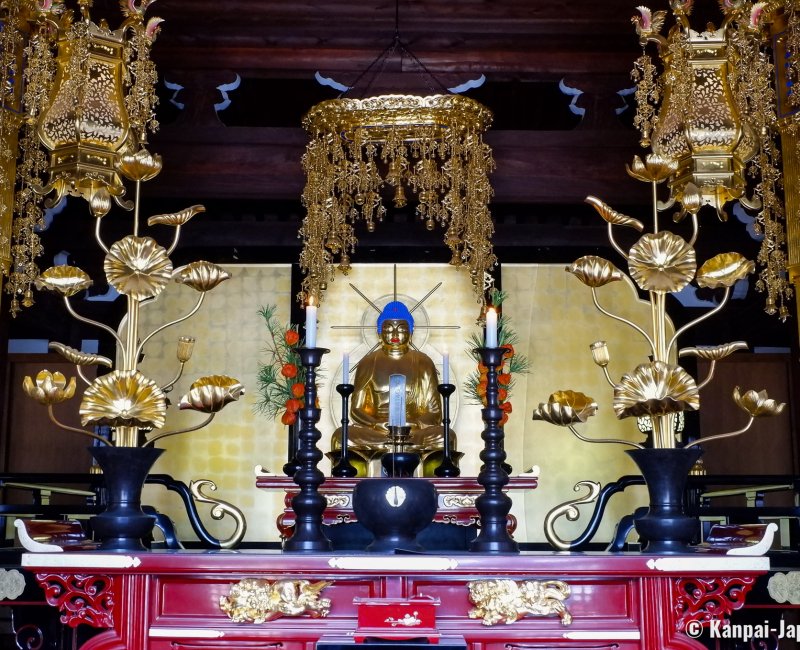
Yakushi Nyorai (薬師如来)
Yakushi (or Bhaisaya in Sanskrit) represents the Buddha of medicine. He reigns in the eastern part of the universe, on the side of the rising sun, a place initially attributed to Ashuku Nyorai in Japan, and heals the bodies and the spirits. He pronounced 12 wishes when he was a Bodhisattva, including 2 that aimed at saving and healing the living beings.
Yakushi Nyorai is often pictured with a vial symbolizing the treatments for bodies and minds in his left hand, and his right hand raised at the level of his chest, the palm facing spectators.
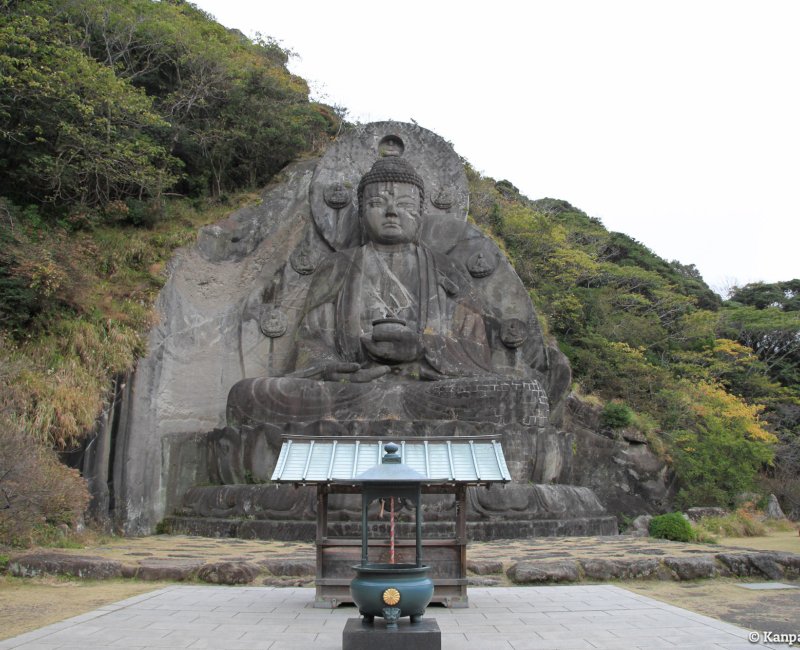
Bodhisattva
Called Bodhisattva or bosatsu (菩薩) in Japanese, these beings are aspiring Buddha. Once they completed their path to the Enlightenment, they access to the status of nyorai. Those who stay at the bosatsu level do it knowingly to stay with the Humans and help them to enlighten.
Miroku Nyorai (弥勒如来) or Miroku Bosatsu (弥勒菩薩)
Both Buddha of the future and bodhisattva, Miroku (or Maitreya in Sanskrit) has a specific place in the pantheon. He will indeed appear on Earth only after Buddhism has disappeared, to save the beings who could not reach enlightening yet. This situation is supposed to happen in a little bit more than 5 billion years after the birth of Buddha Shaka (Siddhârta Gautama), so there is still some time ahead.
Also the Buddha of benevolence, he is sometimes pictured wearing a sort of hat or a crown, in a meditative posture, sitting the right leg on his left knee (in the position called 半跏踏下坐 hankafumisageza).
The name "miroku" directly refers to the word "mirai" in Japanese, that means "future".
Kannon Bosatsu (観音菩薩)
Most of the times simply called Kannon (or Avalokitésvara in Sanskrit), this bosatsu is one of the most popular entities in Japan, and is mostly revered under its feminine appearance.
As the goddess of compassion and mercy in Japan, she shows universal kindness and is said to have already appeared 33 times on Earth to save humankind. Several regional Buddhist Kannon-related pilgrimages exist throughout the archipelago, each of them having 33 temples to visit, especially in the Kansai, Kanto and Chugoku areas, and in Mogami, an ancient province in the north of Japan.
Kannon’s representations are diverse and she is often pictured holding a lotus in the hand. One of her form is a thousand-arms goddess that reminds of the Hindu god Shiva.
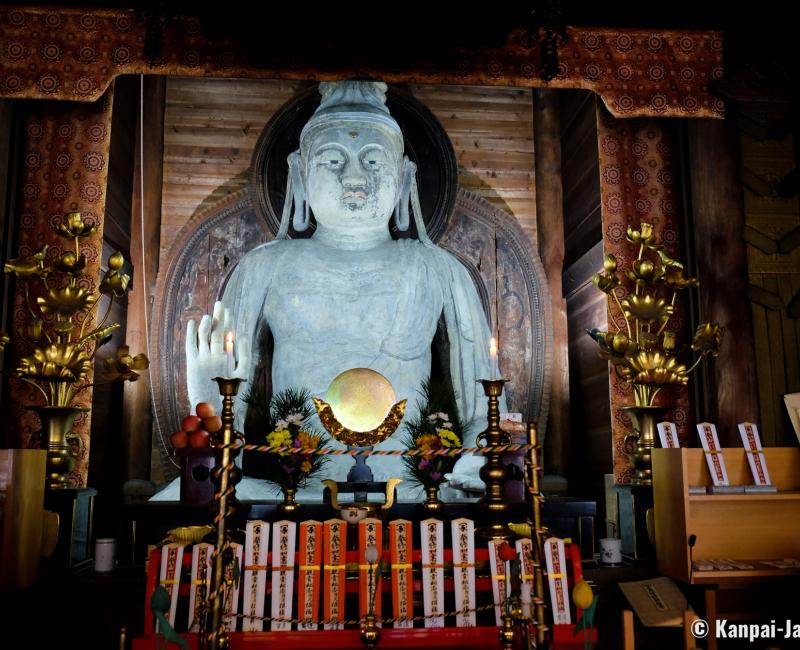
Jizo Bosatsu (地蔵菩薩)
Jizo (or Ksitigarbha in Sanskrit) is the protector of children and travelers, specifically pilgrims. A very revered deity in Japan, he is especially worshiped after a child’s death, to help them reincarnate more quickly. He is therefore ubiquitous in Buddhist cemeteries and in temples’ most sacred and remote places, the okuno-in.
He is characteristically pictured into a childlike small statue, the head covered by a knitted hat and wearing a red bib. Jizo Bosatsu can also be pictured holding a stick to walk the world looking for lost souls, like a pilgrim accompanied by children at his feet or in his arms.
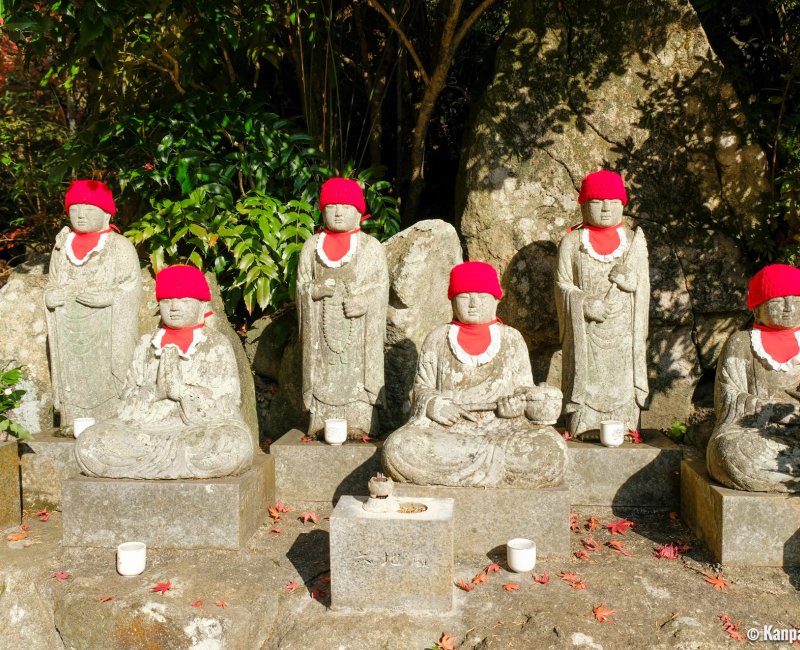
Other popular gods
These Buddhist deities rank below the Buddhas and bosatsu in the Japanese pantheon.
Myo-o (明王)
The Myo-o are the 5 Wisdom (or Knowledge depending on the translation) Kings and are the wrathful manifestations of the 5 Buddhas of Wisdom. The most renown in Japan is without a doubt Fudo Myo-o (不動明王), Acalanatha in Sanskrit, that represents immutability and wards off demons and other beings of the inferior worlds.
The flames in his back burn the material or emotional attachments that prevent humans to reach Enlightenment. Fudo Myo-o is also holding a sword to cut the links of the karma to improve it. He also has a kind of lasso called 羂索 kensaku in Japanese, to catch people straying too far away from the Buddhist law.
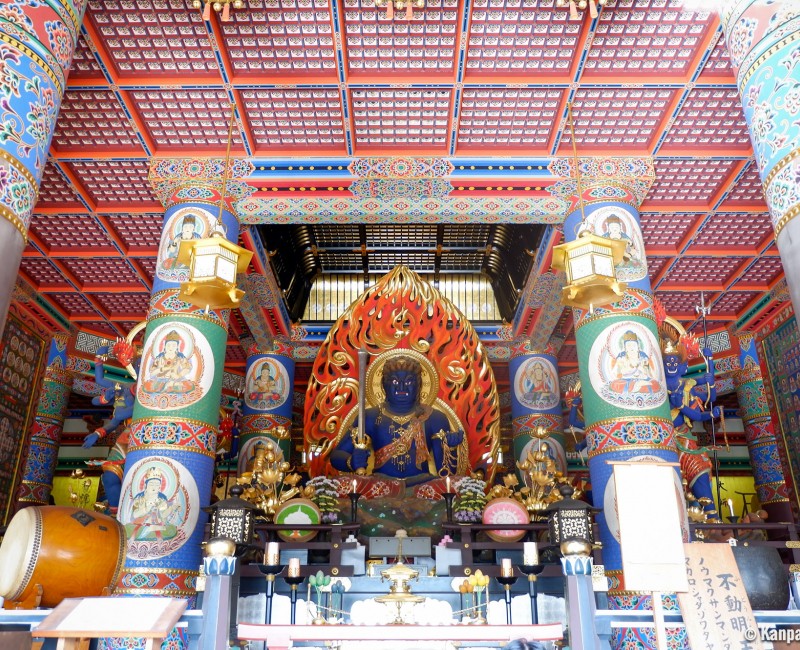
Shitenno (四天王)
The Shi-Tenno guardians (or Lokapâla in Sanskrit) are the 4 Heavenly Kings watching over the 4 cardinal points of the universe in Buddhism. In Japan, they are called:
- Bishamonten (毘沙門天) or Tamonten (多聞天) who watches over north;
- Jikokuten (持國天) protecting east;
- Komokuten (廣目天) facing west; and,
- Zochoten (増長天) watching south.
Bishamonten (or Vaisravana in Sanskrit) appears as the most important of the 4 as he is in charge of warding off demons arriving from the northern direction. With an extraordinary sense of hearing, he is often pictured wearing a Chinese-style armor, holding a spear and a small pagoda in the hand. As a deity of war and luck he also belongs to the popular syncretistic group of the 7 Lucky Gods of Japan.
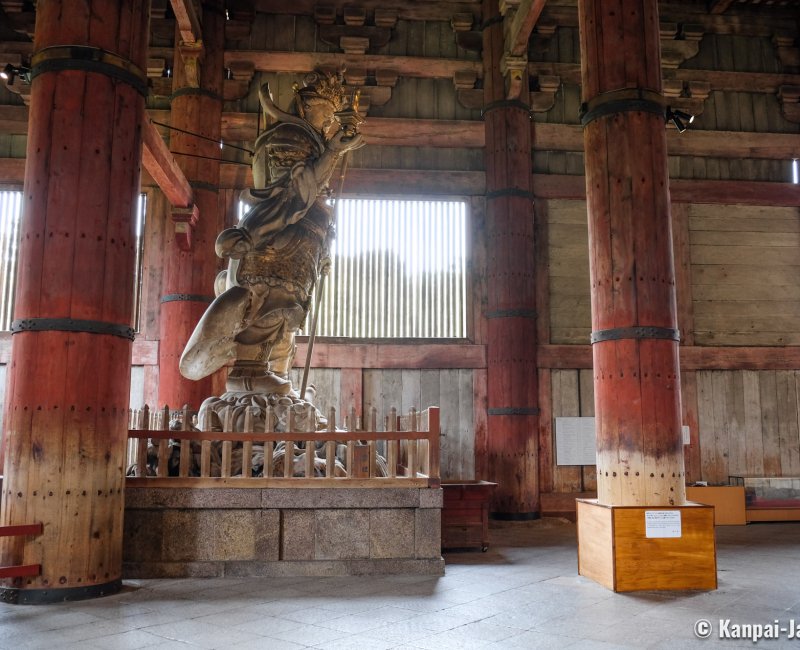
The Buddhist cult tends to resort to monumental architecture. Japan therefore has several great Buddha statues, called Daibutsu (大仏), the most appreciated by tourists being:
- The statue of Dainichi Nyorai in Nara’s Todai-ji; and,
- The statue of Amida Nyorai, at the Kotoku-in in Kamakura.
Admiring these statues in person never fails to amaze, even if not a Buddhist follower nor a religious person.

